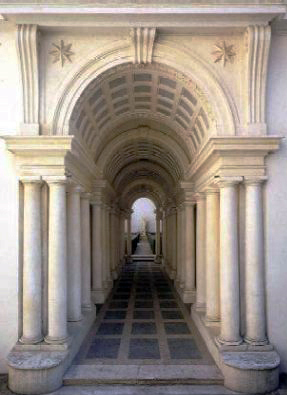Trompe-l'oeil, or "fooling thes eye", denotes paintings or photographs so executed annd placed as to suggest the images are real. After Antiquity, the the first trompe l'oeil paintings were executed by Renaissance Italian painters after the geometric secrets of perspective were rediscovered. Visitors to the churches and palaces on the interior walls of which they painted these illusions could now experience the novel uncertainty that goes with the possibility of having huge potted plants dumped on them.
Or, they could break their noses walking into doorways that weren't there.
The fact is, you don't have to go all the way to Italy to see an example of trompe-l'oeil, because you can do that right here in the City of Culver City City, as we like to call it. If you have recently walked into this signal box...
... then you, too, have become the victim of trompe-l'oeil. To help you avoid traps like this in the future, here's a more revealing view of the signal box's true nature:
While approaching the refurbished Culver Hotel, it's more than possible that a strolling Munchkin, or a small child, has broken his nose walking into this signal box standing directly to the west.
If only he'd approached it from this slightly different direction...
... he would have seen this dangerous illusion for what it was, and averted this near tragedy. Instead of being rushed over to the Brotman ER with a broken nose, this Munchkin or whoever it was would have been able to stroll back to the parking garage, pausing to take in one of the several zoetropes positioned around the area.
Giving this odd cylindrical object a hearty shove, the Munchkin would have been able to enjoy this interesting illusion:
Here's another, with a more up-to-date subject.
And now it's time to go.
 |
| Ceiling Fresco by Andrea Mantegna, ca. 1470. Camera degli Sposi, Palazzo Ducale, Mantua |
Or, they could break their noses walking into doorways that weren't there.
 |
| Fresco in the Palazzo Spada in Rome by Francesco Borromini. |
... then you, too, have become the victim of trompe-l'oeil. To help you avoid traps like this in the future, here's a more revealing view of the signal box's true nature:
If only he'd approached it from this slightly different direction...
... he would have seen this dangerous illusion for what it was, and averted this near tragedy. Instead of being rushed over to the Brotman ER with a broken nose, this Munchkin or whoever it was would have been able to stroll back to the parking garage, pausing to take in one of the several zoetropes positioned around the area.
Giving this odd cylindrical object a hearty shove, the Munchkin would have been able to enjoy this interesting illusion:
Here's another, with a more up-to-date subject.
And now it's time to go.